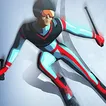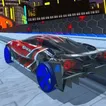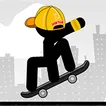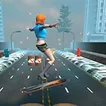


































Skateboard Games: The Ultimate Guide to Digital Skateboarding Fun
Skateboarding has transcended the boundaries of physical streets and parks, carving out a thrilling niche in the digital world. Skateboard games have become a cultural phenomenon, capturing the essence of the sport and its lifestyle while making it accessible to a global audience. These games offer a virtual playground for enthusiasts and novices alike, providing an opportunity to experience the rush of skateboarding without the risk of scraped knees.
The allure of digital skateboarding lies in its ability to blend creativity with skill. Players are invited to express themselves through an array of complex tricks and styles, navigating virtual environments that range from realistic urban landscapes to fantastical skate parks. The freedom to experiment with moves and techniques, without the constraints of physical limitations, has opened up new possibilities for gameplay and personal expression.
As skateboarding games have evolved, they have become more than just a form of entertainment. They serve as a bridge between cultures, introducing the sport to those who may never have set foot on a skateboard. The impact of these games extends beyond the screen, influencing fashion, music, and the very way skateboarding is perceived in society.
The digital realm of skateboarding games is a testament to the sport’s enduring appeal and its ability to adapt to the changing landscape of gaming technology. Whether providing a nostalgic trip down memory lane or a cutting-edge experience that pushes the limits of what’s possible, these games continue to captivate players around the world. They offer a unique blend of adrenaline-fueled gameplay and a platform for creative expression, ensuring that the spirit of skateboarding thrives in the hearts of gamers everywhere.
Experience the Rush: Top Skateboarding Games and Gameplay
Skateboarding games have captured the essence of the sport’s adrenaline rush, offering players a chance to perform jaw-dropping tricks and navigate through challenging courses. The core appeal of these games lies in the seamless blend of creativity, skill, and freedom. Players can indulge in the art of skateboarding, combining flips, grinds, and aerials to create a symphony of movement that would be daunting, if not impossible, in the real world.
The gameplay in these digital arenas is diverse, catering to both casual fans who seek a quick thrill and dedicated skateboarding purists who strive for perfection in every run. The virtual skate parks are designed with intricate detail, encouraging exploration and the discovery of new routes and hidden spots. This encourages players to push the boundaries of their digital skateboarding skills, just as they would on a physical board.
Competition is another thrilling aspect, with challenges that range from high-score contests to head-to-head battles against other players. These competitions foster a sense of community and rivalry, driving players to refine their techniques and rise through the ranks. The joy of landing a complex trick combo under the pressure of competition is a feeling that resonates with the heart-pounding excitement of real-life skateboarding.
The gameplay mechanics have evolved to provide an immersive experience that mirrors the real-world thrill of skateboarding. The intuitive controls and responsive feedback give players a sense of control and connection to their virtual skateboarder. This connection is crucial, as it allows players to feel every successful trick and every hard-earned victory, making the digital skateboarding experience as close to the real thing as possible.
The Evolution of Skateboarding Games: From Arcade to Authenticity
Skateboarding games have come a long way since their inception, evolving from simple, pixelated arcade titles to sophisticated simulations that offer a near-authentic skateboarding experience. The journey began with rudimentary graphics and basic gameplay, where the objective was often limited to scoring points through a series of uncomplicated tricks and jumps. These early games laid the foundation, capturing the imagination of players and setting the stage for the genre’s future.
As technology advanced, so did the complexity and realism of skateboarding games. Developers began to incorporate more nuanced controls and physics engines, allowing for a more accurate representation of skateboarding’s intricacies. The environments became more lifelike, with detailed urban settings and true-to-life skate parks that players could explore. The digital skaters themselves transformed from mere avatars into fully-realized characters, with the ability to perform a vast repertoire of tricks that mirrored the progression of the sport itself.
The evolution of these games also brought about a deeper level of engagement. Players were no longer just passively performing tricks; they were planning runs, strategizing on how to link moves together for maximum impact, and exploring every inch of the virtual world to find the perfect spot to execute their skills. This shift towards authenticity didn’t just change the way games were played; it changed the expectations of what a skateboarding game could be.
The impact of this evolution is evident in the way skateboarding games are now perceived. They are no longer seen as mere diversions but as platforms that can offer a genuine understanding of skateboarding culture and technique. The digital world of skateboarding games has matured, reflecting the sport’s own growth and the dedication of its enthusiasts, and in doing so, has carved out its own legitimate space in the pantheon of sports gaming.
The Cultural Impact and Creativity of Skateboarding Games
Skateboarding games have not only revolutionized the gaming landscape but have also left an indelible mark on the cultural fabric of society. They’ve played a pivotal role in propelling skateboarding from a niche hobby to a celebrated global phenomenon. By offering a digital platform for expression, these games have allowed players to experiment with style and creativity in ways that parallel the real-life skateboarding community.
The cultural reach of these games extends far beyond their virtual environments. They’ve influenced fashion trends, with digital skaters donning attire that has inspired real-world clothing lines. The soundtracks, often a blend of punk, hip-hop, and indie music, have shaped players’ musical tastes and contributed to the popularity of various artists and genres.
In the realm of creativity, skateboarding games have been a canvas for players to showcase their inventiveness. The ability to customize characters and design unique skate parks has given rise to a new form of digital artistry. Players spend hours crafting their ideal skateboarding spaces and avatars, infusing them with personal flair that often reflects their own identities and aspirations.
Moreover, the trick inventiveness within these games has mirrored the progression and evolution of skateboarding itself. Players are encouraged to push the envelope, creating and naming new tricks that challenge the status quo. This aspect of gameplay has fostered a sense of community and collaboration as players share and learn from each other, much like skateboarders sharing tips and tricks at a local skate park.
In essence, skateboarding games have become more than just a pastime; they are a celebration of the sport’s culture and a testament to its influence on society. They’ve enabled a dialogue between the virtual and the real, allowing skateboarding to flourish in the digital age and continue to inspire a new generation of enthusiasts.




